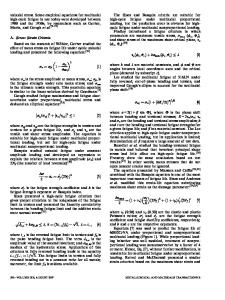A Brief Review of the Mechanics of Watch and Clock
According to literature, the first mechanical clock appeared in the middle of the fourteenth century. For more than 600 years, it had been worked on by many people, including Galileo, Hooke and Huygens. Needless to say, there have been many ingenious inve
- PDF / 3,528,049 Bytes
- 41 Pages / 439.37 x 666.142 pts Page_size
- 109 Downloads / 402 Views
A Brief Review of the Mechanics of Watch and Clock
According to literature, the first mechanical clock appeared in the middle of the fourteenth century. For more than 600 years, it had been worked on by many people, including Galileo, Hooke and Huygens. Needless to say, there have been many ingenious inventions that transcend time. Even with the dominance of the quartz watch today, the mechanical watch and clock still fascinates millions of people around the, world and its production continues to grow. It is estimated that the world annual production of the mechanical watch and clock is at least 10 billion USD per year and growing. Therefore, studying the mechanical watch and clock is not only of scientific value but also has an economic incentive. Nevertheless, this book is not about the design and manufacturing of the mechanical watch and clock. Instead, it concerns only the mechanics of the mechanical watch and clock. Generally speaking, a mechanical watch is made of five parts as shown in Fig. 2.1. They are the winding mechanism, the power storage, the gear train, the display and the escapement. There are two kinds of winding mechanisms: manual winding and automatic winding. The latter is usually applied to watches and will be discussed in Chap. 5. The winding mechanism provides kinetic energy to drive the watch and clock. This energy is stored in the power storage (the mainspring). The energy from wounded mainspring drives a gear train, which usually consists of three sets of gears: the second pinion and wheel, the third pinion and wheel as well as the escape pinion and wheel. For timekeeping though, the brain is the escapement. It is the most important and most distinctive part of the mechanical watch and clock. Why the escapement? It is well known that a watch and clock must have a precise and reliable means for timekeeping. One way is using a pendulum. It is said that pendulum theory was inspired by the swinging motion of a chandelier in the Pisa Cathedral, as shown in Fig. 2.2 (Wikipedia 2004a). Galileo Galilee (Wikipedia 2001a), Fig. 2.3, discovered the crucial property of the pendulum in 1606, which led to his decision to build a functioning pendulum clock.
R. Du and L. Xie, The Mechanics of Mechanical Watches and Clocks, History of Mechanism and Machine Science 21, DOI: 10.1007/978-3-642-29308-5_2, Ó Springer-Verlag Berlin Heidelberg 2013
5
6
2 A Brief Review of the Mechanics of Watch and Clock
Winding
Power
Gear train
Escapement
storage
Display
Fig. 2.1 The basic structure of mechanical watch and clock
Fig. 2.2 The chandelier in the Pisa Cathedral (Wikipedia 2004a)
Despite the fact that the swinging of the pendulum is independent of the amplitude of the swing as well as the weight of the bob, and hence, is a good means for timekeeping, it will inevitably slow down because of air resistance and mechanical friction. As a result, energy must be added, which can be done by the lift weight and/or the wound spring. However, one may imagine that as energy is gradually being used up, the driving
Data Loading...











